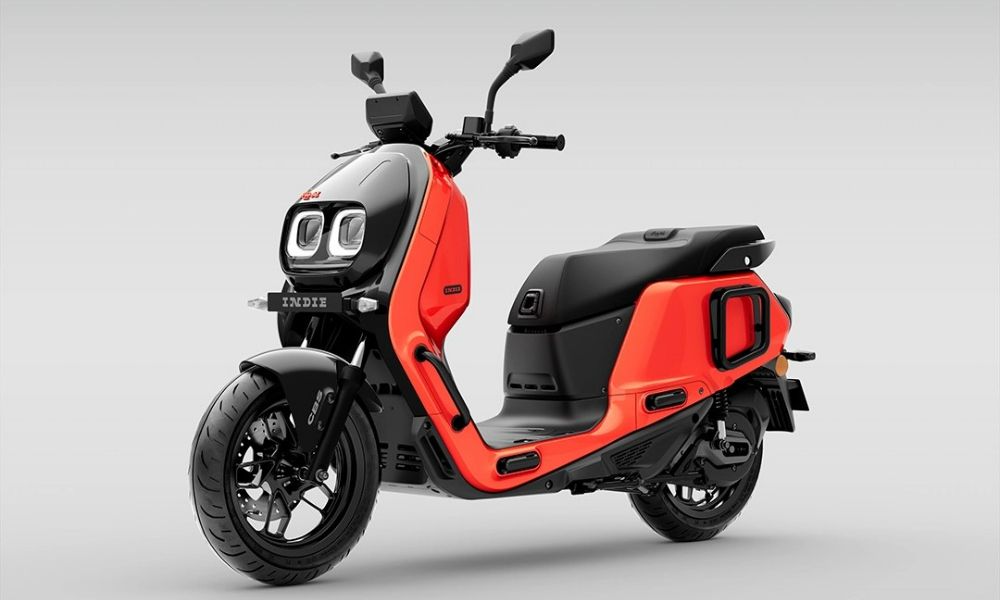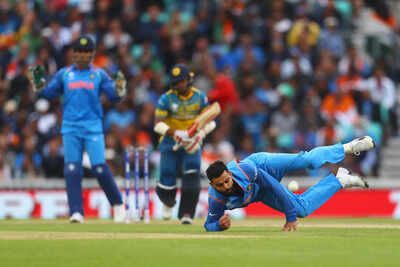There was also a stunt display by the Indian Air Force’s Sarang team using HAL Dhruv helicopters.
BHPian drag racer567 recently shared this with other enthusiasts:
The Bahrain Air Show – held biennially is one of the premier air shows in the region. While it’s nowhere near as big as say, Aero India, it is one of the biggest in the region coming only after the Dubai Air Show. I attended the previous one in 2022 but only had access to the stand where you can see the planes flying because I waited too long to book tickets for the trade pass area that gives you access to the aircraft on display and it was too late by then. It was an interesting mix of US military, Middle Eastern air forces, some civilian jets and a whole lot of general aviation planes. There was also a stunt display by the Indian Air Force’s Sarang team using HAL Dhruv helicopters.
US Military
The US Military section was so well-represented that it was pretty much like a section of its own with a giant American flag in the middle. Their presence is pretty significant given that the US is Bahrain’s closest ally outside the region and hosts the US Navy’s fifth fleet and hence has a pretty huge US military presence – the USAF pilot said as much. The US military personnel were also extremely friendly, there were at least 3 personnel attending to the visitors patiently answering all their questions, matching poses for pictures and generally being super helpful.
The C130J had much more crew attending to the visitors as it was open to all visitors to enter inside with the cabin outfitted for MEDEVAC. This is in stark contrast to the aircraft displays of the Middle Eastern air forces where there generally was only one guy attending and they weren’t particularly interested in attending to the visitors and even then preferred to cater to arab visitors though the Bahraini Air Force airman attending the Viper attack helicopter was quite helpful. Another interesting stand was that of the Pakistanis who had an exceptionally detailed display of the JF-17 with its armaments with multiple crew to assist who were also quite friendly and patiently explained and answered questions, despite knowing we were Indians.
The highlight was the B-52H or the BUFF hands-down. This is the first time I’m seeing one in person and it’s smaller and larger than what I mentally pictured. It was short, perhaps slightly taller than an A320 but it was much wider with massive wings and much longer – sort of like a catfish. The pilot informed us that this particular airframe is the last one ever made – circa 1961-62 and he has personally flown missions of up to 31 hours. The B52 crew was exceptionally proud of the aircraft. These guys flew in all the way from North Dakota for the show and they had a fly-past on the first day which I missed.



Next up, they had a C130J Super Hercules which flew in all the way from Texas. This one was open for the public to enter and it was equipped as a MEDEVAC. This one had a lot of people inside and there were a lot of USAF folks to attend, explaining things and taking pictures. You could even peek into the cockpit with the first officer explaining things. It was quite interesting to learn that these guys could cross the Atlantic without refueling. For those who are interested, the Indian Air Force has 12 of these but has a requirement for about 100 more.
Fun fact, there was actually a USAF band singing songs under the wing of the C130J and it was quite the vibe!

Next up, they had the A10 which again I was seeing for the first time and it looked like a beast. The pilots actually showed us the inner mechanics of the gun (you can see the open hatch) and you do get the impression just how massive the gun is. The A10 crew seemed as proud of their aircraft as the B-52 crew did.

Next, there was an MH-53E (as per the marking on the aircraft) operated by the US Navy. This one is an 80s vintage and was open to visitors, again with two USN folks assisting folks on the outside and the two pilots assisting inside – mainly giving cool poses to pictures. Again, the airmen (or sailors in this case) were just as interesting as the aircraft themselves. It was interesting how open the helicopter was without any HVAC system, apparently, they just fly higher if it gets too hot. This aircraft rotates across bases in the Gulf like Bahrain and Kuwait.

There was the ubiquitous F16 of the USAF, this one is a block 50. I was quite surprised to learn from the airman that this one has an AESA radar, I thought only the block 60s and 70s got those. This airframe is based out of Germany.

This one is not an aircraft but this is the famed HIMARs system mounted on an Oshkosh truck that was supplied to Ukraine recently. There was a particularly enthusiastic US Army soldier explaining the system. The way he explained it, seemed quite like a plug-and-play system where the guided rockets can be quickly exchanged for a missile that can hit up to 300 km. He said there is also a system with multiple launchers but with ‘twice the maintenance, twice the complexity’. Apparently, Marines also used to operate this and have given up the capability to focus on amphibious warfare ‘where they belong’. We were also allowed to sit inside the truck, the last time I sat in the driver’s seat of a military truck was a Shaktiman truck at university but the interior here was a lot more high-tech with screens and all!
This particular unit is based out of Kuwait and was supposed to fly in using the C130J which the soldier said was possible after removing some ‘items’ but it was eventually brought down by road on a flatbed truck. However, he said they could’ve driven it down if they wanted to and it can easily keep up with highway speeds.

Aircraft from Middle Eastern air forces (+Pakistan)
Starting off with the Pakistani JF17 which had a nice display with the weapons neatly arranged. The pilot said that they’d flown directly from Karachi and explained the armament which included a PL-10 AAM along with a massive anti-ship missile. I innocently asked him ‘inti badi hai?’ meaning ‘is it that big?’ pointing at the anti-ship missile which seemed 1/5th as big as the aircraft itself, to which he replied ‘ship bhi tho badi hoti hai na!’ meaning ‘ships are quite big as well! These guys seemed quite professional which is again the commonly held belief by the Indian counterpart as well.

This is a Royal Bahraini Air Force black hawk in which we were allowed to sit and take photos.

Never thought I would see one, a Royal Bahraini Air Force F5, didn’t know they still operated this.

Next is the Bahraini F16 which has seen action in Yemen. This is the older block 50 but the Bahrainis have the block 70s on order which is the most advanced F16 variant ever made and likely similar to the F21 that Lockheed Martin is offering India for the MRCA tender.

Next are two Cobras/Vipers of the Royal Bahraini Air Force. I don’t know the variants of the Cobra but both the older AH-1E/F Cobra and the newer AH-1Z Viper are operated by the Bahrainis. The grey one almost surely is a viper, given the modern cockpit.



Next, we have the Royal Saudi Air Force F15E Strike Eagle. Saudi is a major operator of the F15 and they have further ordered newer variants of the aircraft based on the F15 EX Eagle II which is also offered to India for the MRFA tender. I never realized how massive these jets are! These saw combat in Yemen as well as frequently shooting down Houthi drones and missiles fired into Saudi territory using expensive AMRAAM missiles though likely they use the F15C for this role, not the F15E.

Next is the Eurofighter Typhoon of the Royal Saudi Air Force which also saw combat in Yemen.

Next, there were a bunch of BAe Hawks of the RSAF which are part of the Saudi Hawks team who flew demonstration flights during the show.

Next is the UAE Air Force Mirage 2000 which is also a mainstay of the Indian Air Force. The UAE is a major operator of the Mirage 2000, they have a bigger fleet than India in fact. These Mirage 2000s have seen combat action in Yemen and covertly in Libya as well.

Next is the F16 block 60 of the UAE Air Force – one of the most advanced variants of the F16 as evident from the conformal fuel tanks. These were the first F16s to come with an AESA radar. This variant was the one offered to India as part of the now-redundant MMRCA deal. These have seen combat in Yemen and covertly in Libya.

Civilian jets
Apart from the general aviation aircraft which we didn’t quite take many pictures of, there were four commercial aircraft on display – the highlight being the Gulf Air Boeing 787. People were allowed to see the cockpit of the Boeing 787 but we didn’t get in the aircraft itself as there was a long line and we were positively exhausted towards the end. Missed taking a photo of a Royal Jordanian Embraer E190 family (not sure if it was a 190 or 195) jet on display with the beautiful livery of Royal Jordanian, which I think also had a cockpit tour.



People take refuge from the Bahraini sun under a $250 million shade (despite winter approaching) as they watch the Indian Air Force’s Sarang team perform stunts on 4 HAL Dhruv helicopters.

Indian Air Force Sarang team
Keeping the best for last, we had our very own Indian Air Force’s Sarang Team displaying gut-turning stunts in HAL Dhruv helicopters. The highlight was during the conclusion when three of the four helicopters turned right while the four followed suit – in reverse!
We got to interact with some of the IAF personnel though we didn’t get a chance to talk to them, they were effectively mobbed by local Indian expats continuously taking photos after standing in line – like celebrities!
The HAL Dhruvs were flown in using IAF C17s, I wish they’d kept that C17 on display as well.


The HAL Dhruvs of the Sarang team come in to land as the Saudi Hawks team taxi in their BAe Hawks for the next display of physics-bending aerobatics.

The HAL Tejas, which is India’s own homegrown fighter jet actually had its international debut at the 2016 Bahrain Air Showhope they come back soon.
Check out BHPian comments for more insights and information.





